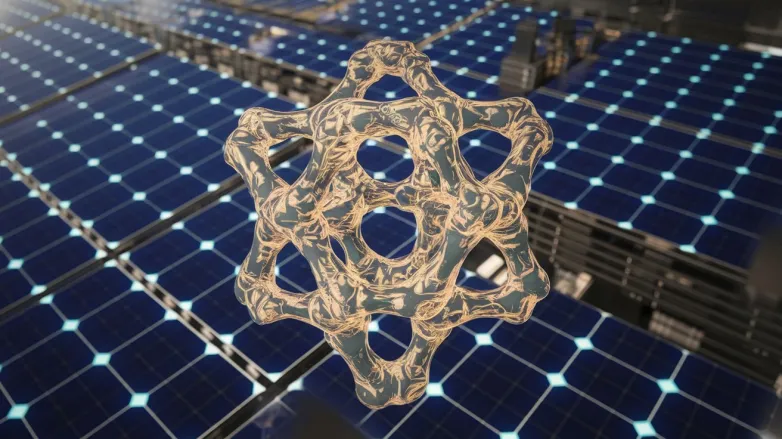Breakthrough Tunneling Layer Boosts Tandem Solar Cell Efficiency

Oct 22, 2024 02:31 PM ET
- Game-changing solar tech! Researchers unveil a revolutionary intermediate recombination layer, boosting efficiency in perovskite/silicon tandem solar cells to an impressive 27.6%. The future of solar is here!

Researchers at the Chinese Academy of Sciences have developed a new intermediate recombination layer (IRL) featuring a heavily doped boron/phosphorus polysilicon tunneling junction, designed for high-efficiency perovskite/TOPCon tandem solar cells (TSCs). This IRL aims to enhance the electrical connection between the top perovskite and bottom silicon cells, addressing the limitations of traditional ITO materials, such as sputtering damage and low processing temperatures.
Through plasma-enhanced chemical vapor deposition, the team produced p+ and n+ poly-Si, optimizing parameters like annealing methods and polysilicon thickness to improve passivation and electrical transport. The result was a proof-of-concept TSC achieving 27.6% efficiency, alongside finite element analysis that provided insights into the impact of poly-Si thickness on photogenerated current, paving the way for future advancements in solar cell technology.
How does the new IRL improve efficiency in perovskite/TOPCon tandem solar cells?
Here are some additional insights into how the new intermediate recombination layer (IRL) contributes to improved efficiency in perovskite/TOPCon tandem solar cells:
- Enhanced Electrical Conductivity: The heavily doped boron and phosphorus polysilicon tunneling junction in the new IRL significantly improves the electrical conductivity between the perovskite and silicon layers. This enhancement reduces resistive losses and facilitates more efficient charge transfer.
- Reduced Recombination Losses: By creating a better interface for electron and hole transport, the IRL minimizes recombination losses that typically occur at the junction of different materials. This is crucial for optimizing the overall efficiency of tandem solar cells.
- Thermal Stability: The introduction of the polysilicon layer improves thermal stability compared to traditional ITO layers. This stability is important because it helps maintain performance under varying environmental conditions, which is vital for commercial solar applications.
- Compatibility with Manufacturing Processes: Utilizing plasma-enhanced chemical vapor deposition (PECVD) for the synthesis of the IRL simplifies integration into existing manufacturing processes. This compatibility can lead to cost savings and more streamlined production workflows.
- Optimized Thickness for Performance: Through careful optimization of polysilicon thickness, researchers can tune the properties of the IRL to maximize the photogenerated current. Finite element analysis has shown how thickness variations can specifically influence efficiency, leading to better designs.
- Improved Light Absorption: The structure of the new IRL enables better light management and absorption within the cell. This can increase the amount of light that is captured and converted into electricity, further enhancing efficiency.
- Scalability for Mass Production: The new IRL design has implications for scalability in mass production. As manufacturing techniques improve and costs decrease, it may become feasible to produce high-efficiency tandem solar cells at a larger scale, benefiting the renewable energy sector.
- Longer Lifespan: The improved materials and structural integrity of the IRL may contribute to longer operational lifetimes for tandem solar cells. This is an essential factor for the financial viability of solar technologies, as longer-lasting products can attract more investments.
- Potential for Integration with Other Technologies: The progress made with the new IRL could pave the way for integrating tandem solar cells with other renewable energy technologies or energy storage solutions, enhancing the overall efficiency and effectiveness of solar power systems.
In summary, the new IRL significantly contributes to the performance of perovskite/TOPCon tandem solar cells by enabling better charge transport, reducing losses, and maintaining thermal stability, all of which culminate in higher energy conversion efficiencies.
SOLAR DIRECTORY
Solar Installers, Manufacturers





